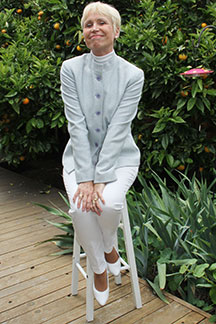A BREXIT (“British exit” from the European Union) is not favored among most members of the European Union according to a YouGov poll published in the “Handelsblatt.” A 31 May 2016 t-online article reports that more than half of surveyed EU-citizens from Germany, Denmark, Sweden and Finland want Britain to stay in the Union. Forty-two percent of Frenchmen are in favor of Britain remaining in the Union, while 32% percent prefer its withdrawal. http://www.t-online.de/wirtschaft/id_77990610/-dexit-jeder-dritte-deutsche-befuerwortet-den-eu-austritt.html

Will there be a BREXIT, DEXIT or other exit from the European Union? J. Elke Ertle, www.walled-in-berlin.com
BREXIT May Start Chain Reaction
If the British vote for a referendum on the United Kingdom’s membership in the European Union on 23 June 2016, most polled EU-citizens suspect that the decision will cause other EU countries to opt for similar referenda. As it stands, only 54% of Germans and 42% of Frenchmen would want to stay in the European Union, given a choice. A German exit from the European Union is called a DEXIT (“Deutscher exit”) .
Beyond BREXIT
When those surveyed were asked which country benefitted most from EU membership, most citizens from Germany, France, Denmark and Finland pointed to Greece. The British, on the other hand, perceived Germany as being the biggest beneficiary. Survey respondents came to a consensus of sorts when asked which country sacrifices the most as a EU-member. Then the British, Germans, French, Finns and Swedes all pointed to their own country as the main victim.
All survey respondents agreed that major reforms are needed relative to social benefits and the refugees crisis. Sixty-two percent of survey participants in Great Britain ranked the need for these reforms at the top, followed by Denmark (56%), Sweden (54%), Germany (52%), France (43%), Finland (42%) and Norway (37%). In general, respondents viewed Greece and Romania along with large businesses and the wealthy as benefitting the most from EU membership. In Germany, 56% of respondents named banks as the biggest beneficiaries, owners of large farms second (53%) and politicians third (38%). Low-income earners were seen as benefitting the least from EU-membership (37%), followed by small farmers (28 %), pensioners (25%) and small business owners (24%). Many respondents described the EU as “uneconomic”, “arrogant” and “far away”.
For a sneak peek at the first 20+ pages of my memoir, Walled-In: A West Berlin Girl’s Journey to Freedom, click “Download a free excerpt” on my home page and feel free to follow my blog about anything German: historic and current events, people, places and food.
Walled-In is my story of growing up in Berlin during the Cold War. Juxtaposing the events that engulfed Berlin during the Berlin Blockade, the Berlin Airlift, the Berlin Wall and Kennedy’s Berlin visit with the struggle against my equally insurmountable parental walls, Walled-In is about freedom vs. conformity, conflict vs. harmony, domination vs. submission, loyalty vs. betrayal.













